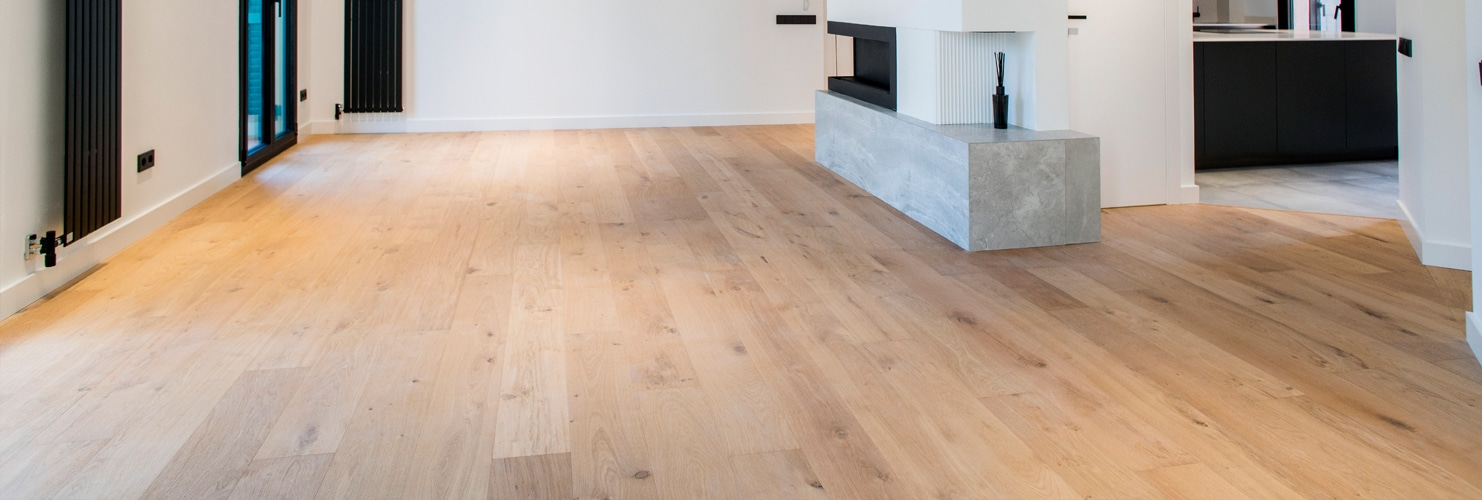Wooden floors: The new post Covid-19 trend
Since the first hardwood floors were made in the mid-17th century, wood has been a permanent element in buildings and architectural spaces all around the world.
After the impact of COVID-19, there are new trends in people’s behaviour and lifestyle: many are leaving the big cities and settling in rural areas in larger and more spacious houses or spending more time at home instead of the office or the gym. This will have positive consequences on the market for indoor and outdoor wooden flooring and an increase in demand is expected.
The feeling of vulnerability in front of new pandemics, as long as the economy allows, will increase the demand for more sustainable, natural and healthier homes. The inclusion of elements and raw materials that improve people’s health and quality of life will also be transferred to facilities such as schools, hotels, offices or hospitals. In the United States, wood construction already reaches 80% and in Europe, especially in the Nordic countries, its growth is exponential. In Spain, on the other hand, there is still a lot of reluctance and concrete prevails. It is believed that after the health crisis of COVID-19, there will be an acceleration of this trend and a new awareness to make better decisions in building construction and service infrastructures that enhance physical and mental health, as well as wellbeing.
The use of wood indoors reduces stress and the activation of people’s nervous systems. The reason is that wood provides a balance between body and mind due to its chemical composition, very similar to that of the human body. It offers us comfort and relaxation to carry out the daily reconnection and regeneration of our bodies and minds. In the United States, the use of wood in hospitals has been shown to positively help patients’ emotional recovery and their physical and mental health and well-being.
A sustainable and responsible choice
When it comes from a responsibly managed forest, wood is one of the most sustainable, environmentally friendly construction materials in the market. Its carbon footprint is lighter than other fossil-based construction materials. Not only that, but wood actually absorbs carbon dioxide while growing.
To ensure that wood remains sustainable, at Yvyra we only work with producers who are sustainable-certified with the FSC, PEFC or COV certifications. We are also proud to see that more and more, our customers become aware of the importance of sustainable wood and demand certified wooden products to achieve LEED points. LEED (Leadership in Energy and Environmental Design) is the most widely used green building rating system in the world. The more points earned, the higher rating the building has.
Long-lasting floors
Part of hardwood flooring’s sustainability is that it can last for decades and can be easily brought back to new through sanding and sealing. With Yvyra’s finishes and treatments, your hardwood floors will last for many years.
Hygienic and easy to clean
The use of wood as a flooring material also has health benefits: hardwood floors don’t harbor microorganisms and they minimize the accumulation of mold and dust. You can also boost the hygiene of your wood floors with polishes and oil refreshers, which protect the surface of the floors and prevent moisture and bacteria from penetrating the wood.
A timeless and versatile style
The adaptability of wooden floors makes them ideal for any time of interior design style or decor theme. With the wide range of colours, shades, grains and finishes of wooden floors available, you can create the perfect look and feel for every theme you choose for the interior of your home or space.
All in all, wood is the best choice for flooring if you are looking for a beautiful, long-lasting floor that makes your indoor spaces cozy and is also sustainable and environmentally friendly.
Contact us to start your indoor project with Yvyra’s high-quality hardwood and engineered floors.


